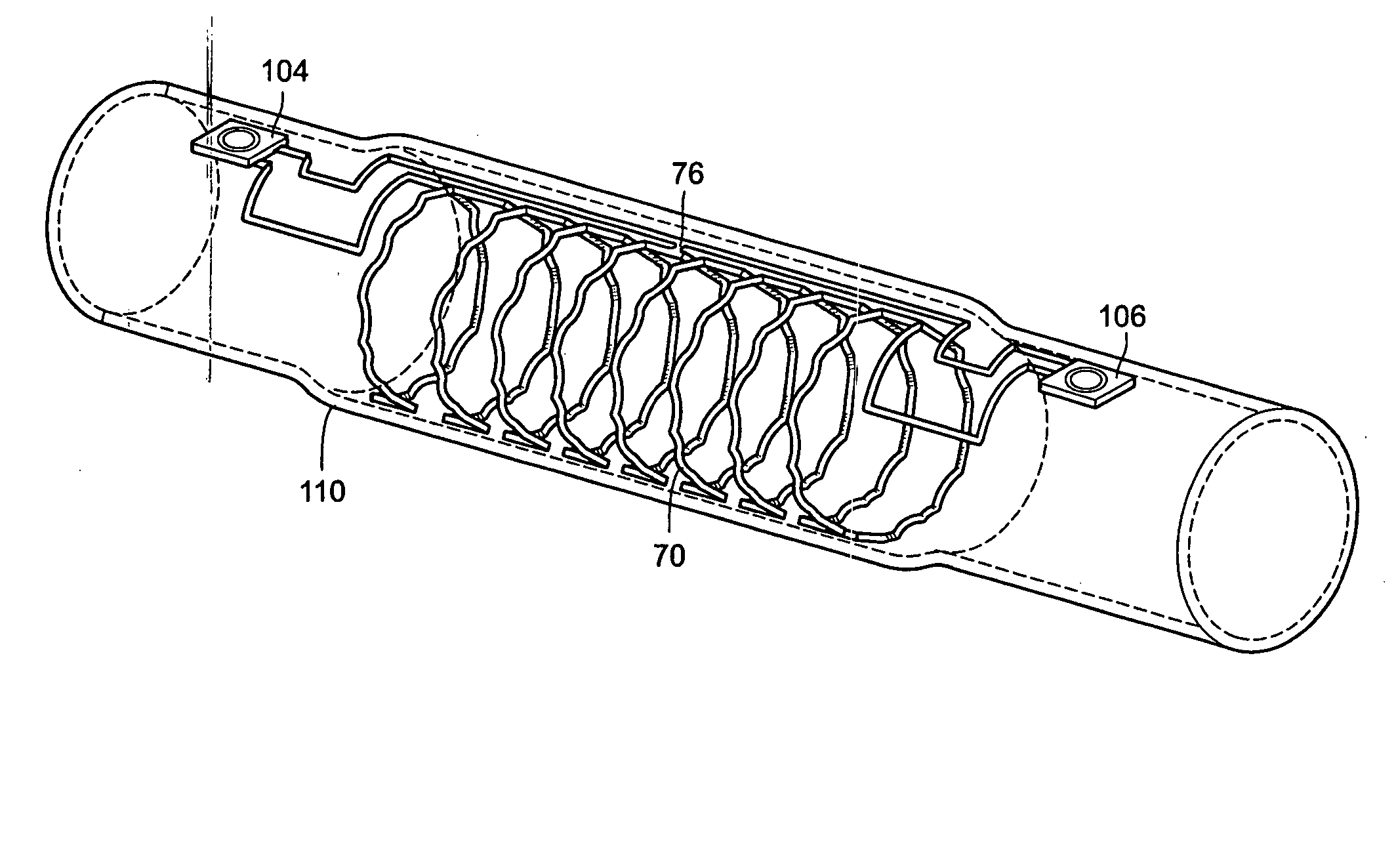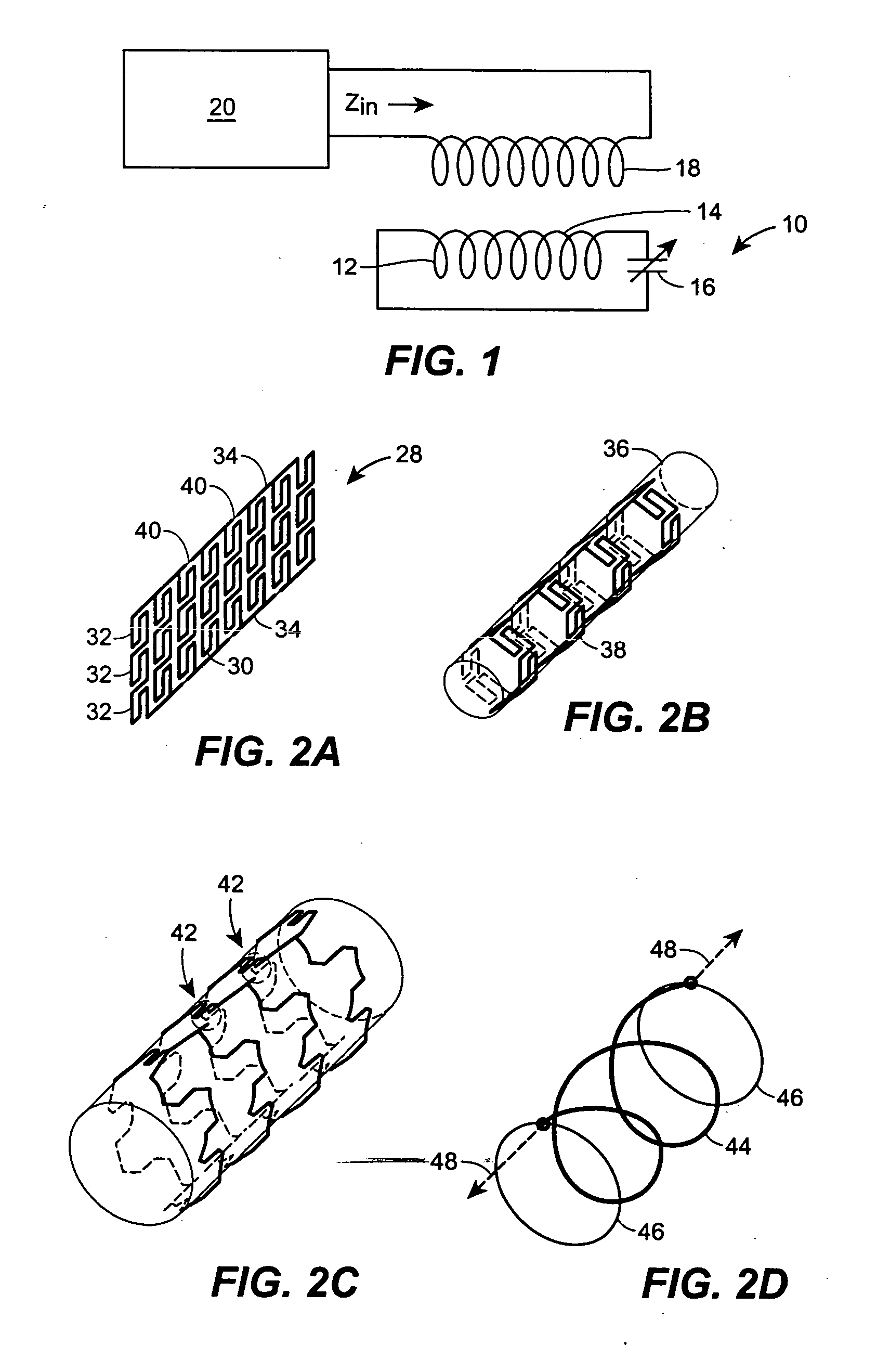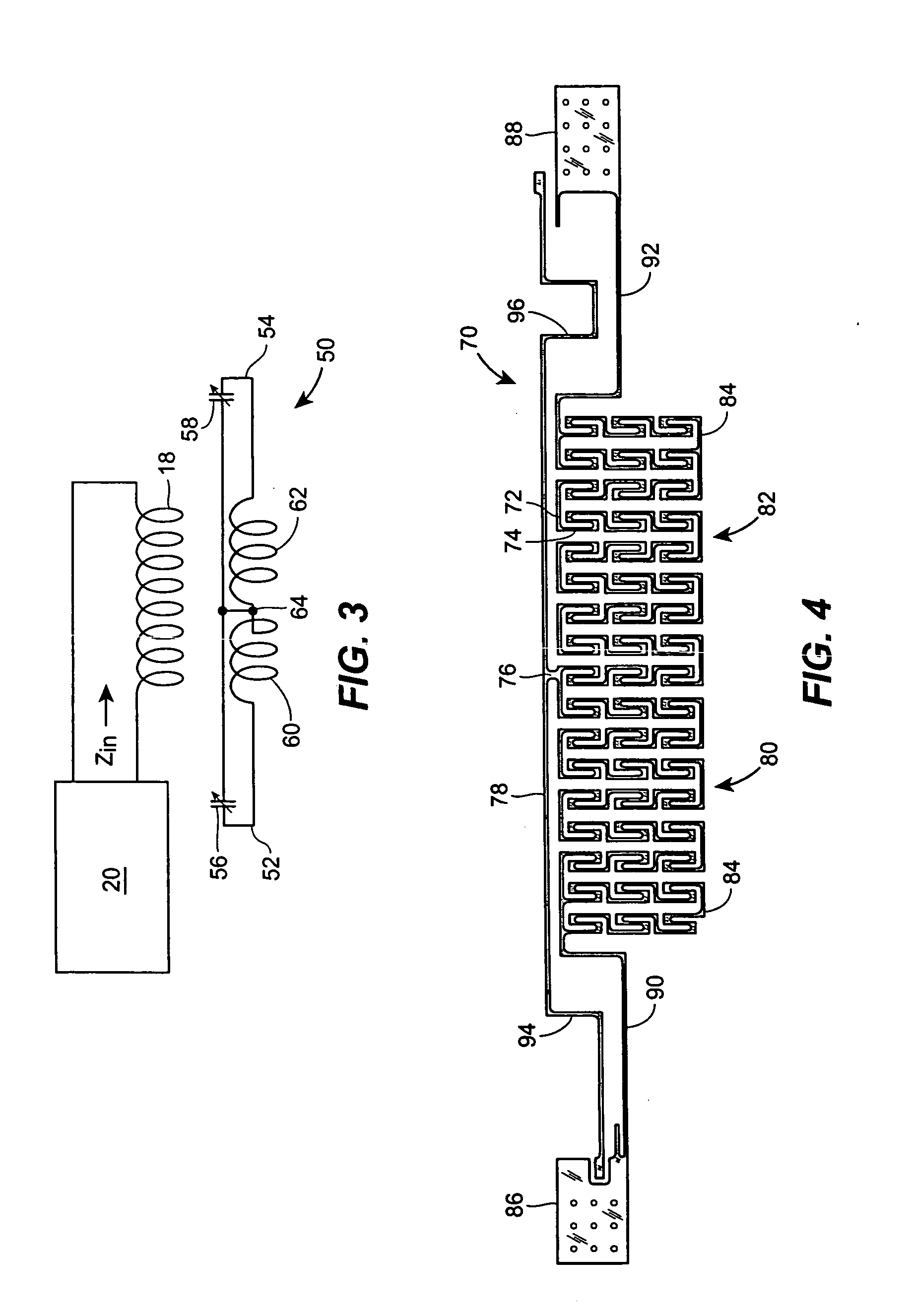Antenna stent device for wireless, intraluminal monitoring
a technology of intraluminal monitoring and antenna, which is applied in the field of intraluminal devices, can solve the problems of not sufficiently teaching or suggesting to one of ordinary people, complex implementation and deployment of such devices, and re-closures that occur, etc., and achieve the effect of maintaining the patency of the lumen
- Summary
- Abstract
- Description
- Claims
- Application Information
AI Technical Summary
Benefits of technology
Problems solved by technology
Method used
Image
Examples
example 1
As an initial matter, it should be noted that, for an effective wireless link, minimal damping is desired in the LC tank. The quality factor is expressed as: Q≈1RSTpLSTCSE+CSTp
where LST is inductance of the stent device, CSE is capacitance of the sensor, CSTp is parasitic capacitance, and RSTp is parasitic resistance. The impact of the RSTp is greater than that of CSTp. The parasitic resistance contributed by the stent inductance is inversely related to the beam cross-section, whereas the parasitic capacitance that it contributes is proportional to the beam surface area. Therefore, RSTp depends on the square of the beam diameter whereas CSTp is simply proportional to it. Thus, it is electrically favorable to increase the thickness of the beams. In fact, this is favorable mechanically as well, because it would increase the radial stiffness of the stent. However, from the biological viewpoint, increasing the volume of the structural elements can be undesirable, which may warrant a...
example 2
This example presents a micromachined antenna stent device that is integrated with two implantable microsensors for wireless sensing of blood flow and pressure with no battery. A device that has 20-mm length and 3.5-mm diameter (after expansion) is fabricated from 50 μm thick stainless steel foil by using batch-compatible micro-electro-discharge machining. This is coupled to two micromachined capacitive pressure sensors of approximately 1.4×1.8×0.5 mm3 dimensions. A 0.5-μm thick parylene layer provides electrical insulation. The integrated device is deployed inside a silicone mock artery with a standard angioplasty balloon. The planar structure is plastically deformed to a tubular shape, resulting in dual helical coils with 50-60 nH each. These L-C tanks are used to wirelessly probe pressures at two points along a channel for flow-rate detection. Fluidic experiments that emulate a blockage in the mock artery demonstrate that the resonant impedance and phase provided by the LC-tanks...
PUM
| Property | Measurement | Unit |
|---|---|---|
| diameter | aaaaa | aaaaa |
| diameter | aaaaa | aaaaa |
| inductance | aaaaa | aaaaa |
Abstract
Description
Claims
Application Information
 Login to View More
Login to View More - R&D
- Intellectual Property
- Life Sciences
- Materials
- Tech Scout
- Unparalleled Data Quality
- Higher Quality Content
- 60% Fewer Hallucinations
Browse by: Latest US Patents, China's latest patents, Technical Efficacy Thesaurus, Application Domain, Technology Topic, Popular Technical Reports.
© 2025 PatSnap. All rights reserved.Legal|Privacy policy|Modern Slavery Act Transparency Statement|Sitemap|About US| Contact US: help@patsnap.com



